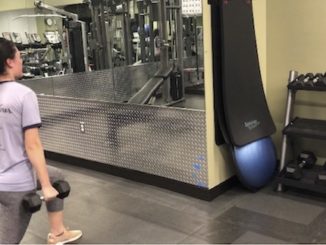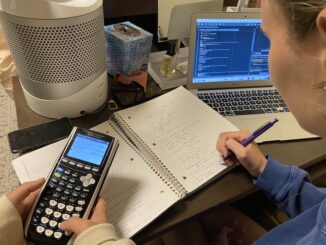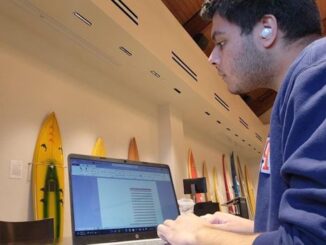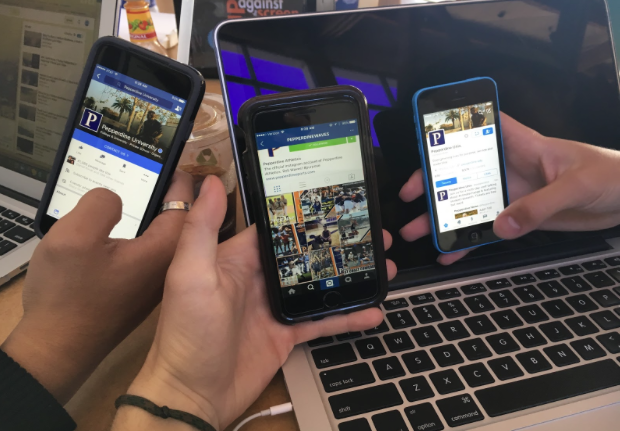
Ben Holcomb, Pepperdine’s Seaver College social media manager for admission, had a vision to give prospective students a behind-the-scenes look into the lives of Pepperdine students.
He struck on the idea to follow five first-year students as they navigated life at Pepperdine University. The idea turned into the reality documentary series, “Rising Tide.”
This semester, Holcomb has produced seven “Rising Tide” episodes. The debut episode received approximately 10,700 views on YouTube.
“Rising Tide” cast members, Olivia Belda, a freshman business administration major, and Katelynn Quick, a freshman psychology and pre-occupational therapy major, double as Seaver Admission tour guides. Prospective students who watch “Rising Tide” recognize Belda and Quick when they visit Pepperdine, Holcomb said.
“We want to be on the front of the wave, no pun intended,” Holcomb said. “We’re really the only school in the whole country making a reality show docuseries with their students.”
In a 21st century world accustomed to using Facebook, Instagram, Twitter and Snapchat, Seaver Admissions is just one of many organizations on campus using social media as a tool to promote the university to prospective students, communicate within the Pepperdine community and share information with the general public. Pepperdine’s International Programs, Pepperdine Graphic Media, the Student Government Association, the Student Programing Board, the Panhellenic council and Interfraternity council are all creatively improving their social media outreach efforts.
“We want to give our followers great content valuable to their life,” Holcomb said. “The main question is how can we create valuable content and make it worthwhile for someone to follow us?”
Some 65 percent of adults now use social networking sites, according to Pew Research Center. Today, 90 percent of young adults use social media, compared to 12 percent in 2005.
“Since I’ve gotten here in 2014, we’ve doubled the amount of followers in every Seaver admission social media account,” Holcomb said.
Holcomb and Noelle Seybert, Pepperdine’s social media manager, are both interested in reaching the hearts of followers.
“It’s a three step process: think, feel, act,” Seybert said. “We want you to feel something, no matter what type of person you are.”
Aside from “Rising Tide,” Pepperdine admission counselors surprised prospective students with news of their college acceptance over Skype. Seaver Admissions edited these into a video that received approximately 13,300 views on YouTube in 2015 and shared it on Pepperdine’s social media accounts.
“People like seeing people surprised,” Holcomb said. “The Pepperdine community loved it, but people outside of Pepperdine loved it too.”
Seybert studied the Web data behind different Pepperdine posts to understand what people want to see on their social media feeds.
“Content is really important and knowing what people want to see,” Seybert said. “We posted on the alumni account and did a NCAA March Madness posting because people were expressing interest in the hype. (The NCAA March Madness post) fell off when we posted about an alumna who was in a recent terrorist attack.”
Pepperdine followers were more interested in the news of the alumna than NCAA March Madness, Seybert said.
In Pepperdine’s case, finding a way to tie social media posts back to the school has been successful.
“If you’re true to your university, you are different from the rest,” Seybert said. “Our students make this place unique and our alumni are doing amazing things. We just have to make them the center of our postings and this is what makes us stand out.”
Although picturesque views of blue seas and palm trees distinguish Pepperdine University from college campuses across the nation, beauty is just one of the many characteristics Pepperdine advertises on its social media platforms.
“It’s not just about the pretty pictures of Malibu,” Seybert said. “It’s about finding what was successful for us and asking why. How can we do that again, so we can make smarter decisions later.”
Social media strategies differ for each Pepperdine organization.
Pepperdine’s International Programs
The saying “a picture is worth a thousand words” goes miles in the International Programs Office. This year Pepperdine IP promoted theme weeks on social media. Themes included pictures of food, day trips or different abroad cities, said Karl Kalinkewicz, assistant director of recruitment and student development.
“We want people to know what Pepperdine IP is doing,” Kalinkewicz said. “Social media is a way to communicate our study abroad program to other schools. Using hashtags like ‘#studyabroad’ on social media inform people outside of Pepperdine of our opportunities.”
International Programs has become a significant part of Pepperdine’s culture, as The Institute of International Education reports that 86.5 percent of Pepperdine students studied abroad in 2013-2014. With a large population of students going abroad, Kalinkewicz wants to continue promoting these programs in new, exciting ways.
“Instagram works best for us because IP translates well into pictures,” Kalinkewicz said. “But, my objectives for the future are looking into how we can expand our social media. How can we use Pinterest, Snapchat and Periscope to get as many people engaged as possible?”
As many newspaper publications around the world are emphasizing their Web product, Pepperdine Graphic Media is learning to engage readers online. The Graphic breaks news on social media to get students to click through to the website, said Madison Harwell, sophomore broadcast journalism major and online managing editor for the Graphic.
“We are an online-first publication,” Harwell said. “It’s most important that we engage our users through social media. If people aren’t reading our stuff, what’s the point?”
Social media usage has changed the way the Graphic is able to receive and break news to the public. The Paris attacks in November 2015 impacted Pepperdine University, as many students were in Europe-based study-abroad programs. Harwell used the safety check feature on Facebook, which notified her if Facebook friends in Paris were safe.
“People were posting and I was able to reach out to them,” Harwell said. “We were able to find out information so fast, and we would not be able to do that without social media. That’s what broke our story.”
Pepperdine’s Student Government Association
Omari Allen and Edward “Ed Ad” Adutwum, both junior political science majors, used social media uniquely in the spring 2016 SGA presidential election.
Allen produced a geofilter for Pepperdine Snapchat users. A geofilter is a location based overlay where individuals can apply artwork to Snaps.

“Snapchat is the newest of the four main social media platforms right now. It’s more interactive,” Allen said. “My whole campaign was really trying to focus on being ‘all-in.’ Snapchat really captures community because it’s easy for people to get involved by taking selfies and being tied in.”
Adutwum targeted the Pepperdine community on Instagram. His Instagram advertisement prompted users to scroll through four pictures of Adutwum and his running mates.
“Omari was already using Snapchat. We asked ourselves what we could do different on social media,” Adutwum said. “We chose Instagram because we wanted to maximize the chances of people seeing our messages.”
“There seems to be a disconnect from the student representatives and the student body,” said Houston Wilson, freshman class president and a religion and political science double major. “Social media is a way to bridge that gap and bring more awareness to efforts on campus.”
Facebook has been most effective for SGA because they can reach more people. Social media has allowed alumni to be informed on the efforts SGA is taking to make Pepperdine a better place for students, said David Hylton, SGA executive vice president and senior advertising major.
“People share our posts on Facebook,” Hylton said. “It’s great when we see comments from alumni on our page.”
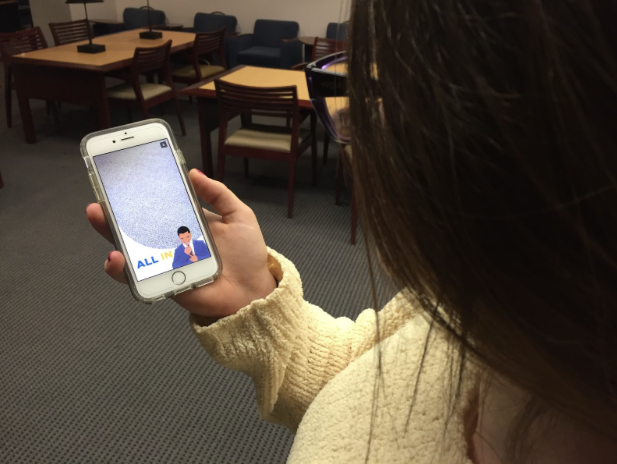
Pepperdine’s Student Programing Board
Social media is used in Pepperdine’s Student Programing Board to communicate with the student population, said Bailey Bosworth, integrated marketing communication junior and the Board’s public relations committee member. The Board’s main goal in using social media is getting students to attend events.
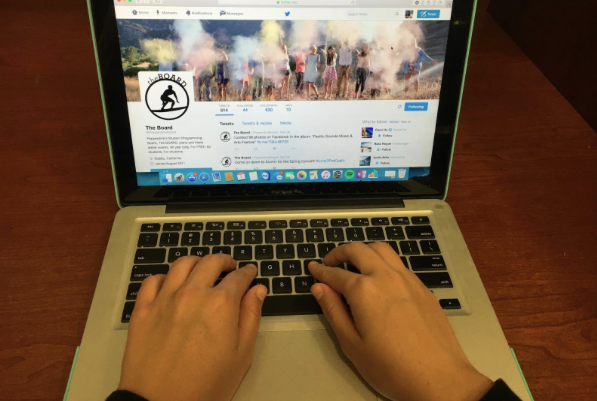
“We primarily use Instagram and Facebook. It’s the easiest way to inform people,” Bosworth said. “We create Facebook events. It’s the most impactful because the posts are concentrated with all the details of the event we are putting on.”
The Board’s goal is to gain more followers on their social media accounts, Bosworth said. Using their event planning as leverage, they have done giveaways on their social media accounts leading up to events in order to gain followers.
“For the spring concert release giveaway, people had to follow our social media accounts,” Bosworth said. “The winner was announced there.”
Pepperdine Panhellenic Council and Interfraternity Council
Pepperdine Panhellenic Council and Interfraternity Council give back through philanthropy events. Using social media platforms, Pepperdine’s Panhellenic Council sororities and Interfraternity Council fraternities are able to share their good works with the Pepperdine community.
The Delta Gamma chapter at Pepperdine University is “always anchored” to “doing good.” Their recent Anchor Splash event raised $24,000 for Service for Sight, a non-profit organization created to support sight preservation.
Tori Santi, junior media production major and Delta Gamma social media coordinator, said she shared videos on Facebook, Instagram and Twitter to promote the event.
“The Anchor Splash video was a fun to make to get people excited,” Santi said. “Social media can sometimes have negative aspects, but this was promoting something so positive. It had a bigger purpose.”
Alexis Medina, freshman integrated marketing communication major and Sigma Phi Epsilon member, created graphic images for Sigma Phi Epsilon members to use as profile pictures on Facebook for upcoming philanthropy events.
“It’s a cool way to spread awareness,” Medina said. “On Facebook it’s everywhere. You know when a philanthropy event is happening at Pepperdine because all of greek life changes their Facebook profile pictures to support the sorority or fraternity in their efforts to raise money for their cause.”
Hannah Parkin completed this story in Dr. Christina Littlefield’s spring 2016 Jour 241 class.

